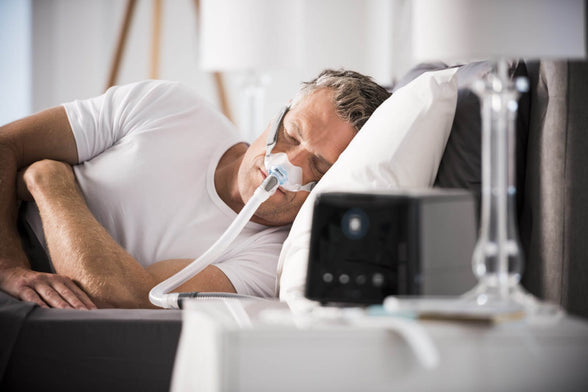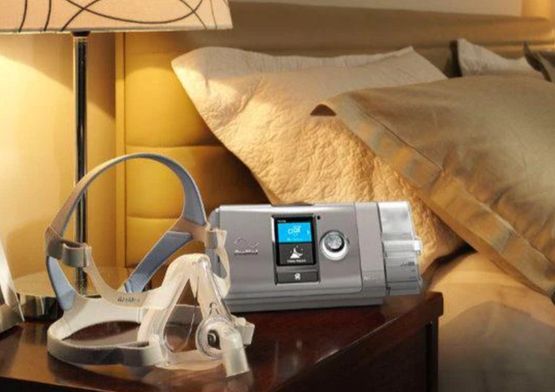Excessive Daytime Sleepiness: Causes, Consequences and Solutions
Excessive daytime sleepiness (EDS) is a symptom that plagues plenty of people around the world, and it’s the inability to remain fully awake during the day. EDS can negatively impact nearly every aspect of your daily life, including your interpersonal relationships, mental and physical health.
Continue reading to learn more about its most common causes, possible negative consequences, and effective solutions.
What Is Excessive Daytime Sleepiness (EDS)?
Is it normal to experience daytime sleepiness? Daytime sleepiness is an extremely common situation experienced by millions of people around the world. However, even though it is common, it’s not normal to feel drowsiness all the time.
Excessive daytime sleepiness (EDS), also called hypersomnolence, is a condition in which people have difficulty staying awake during the day. This is considered excessive when it happens almost every day for, at least, three consecutive months.
People often confuse EDS with fatigue, since both are characterized by low energy levels during the day, and have similar potential causes, such as insufficient sleep. The difference is that people with fatigue tend to stay awake despite feeling tired, while people with EDS tend to fall asleep whenever they are inactive, and sometimes when they are active.
Also, EDS should not be confused with idiopathic hypersomnia (IH), even though it is a symptom of this sleep disorder. People with IH sleep longer than usual and take frequent naps without feeling rested.. There’s no known cause for idiopathic hypersomnia.
How Common Is Excessive Daytime Sleepiness?
EDS is an extremely common condition. According to the National Sleep Foundation around 25% of American adults experienced it in the year 2022. The prevalence of EDS seems to be increasing as the years pass. This condition can affect people of any age and gender, and research suggests that 41.5% of American teenagers have reported falling asleep during the day.
Causes of Excessive Daytime Sleepiness
The underlying causes behind EDS are varied, and can be something as simple as poor sleep habits, or even a medical condition that affects the central nervous system. The most common causes of EDS are:
Sleep Disorders
Most sleep problems can decrease sleep quality enough to result in EDS, especially if they are left untreated for a long amount of time. Some of the most common sleep disorders that are a potential cause of EDS are:
Obstructive Sleep Apnea
Obstructive sleep apnea (OSA), is one of the most common sleep disorders, and the most common sleep-related breathing disorder, in which people have frequent breathing pauses while they sleep. These breathing pauses result in reduced quality and hours of sleep.
The most common symptoms of OSA are daytime sleepiness, snoring, choking or gasping for air during sleep, and morning headaches. The most common risk factors associated with the development of OSA are older age, male sex, obesity, and structural abnormalities of the upper airway.
The effects of long-term untreated OSA are increased risk of high blood pressure, cardiovascular disease, diabetes, memory and concentration deficits, and nonalcoholic fatty liver disease.
If you or your healthcare provider suspect that you may be suffering from OSA, you can get your diagnosis in the comfort of your own home with our very own Home Sleep Test, the easiest way to start your sleep apnea journey.
Narcolepsy
Narcolepsy is a clinical syndrome that combines daytime sleepiness, cataplexy (a sudden loss of muscle tone while awake), hypnagogic hallucinations (hallucinations that happen right when you are falling asleep), and sleep paralysis.
There are two types of narcolepsy:
Narcolepsy type 1, narcolepsy with cataplexy, is the most common type and it usually begins in teenagers and people in their early twenties.
Narcolepsy type 2 is narcolepsy without cataplexy, and it is not as well studied as the first type.
Narcolepsy is caused by the loss of two proteins called orexin-A and orexin-B. These substances promote activity in the regions of the brain that are related to wakefulness. The loss of these substances is thought to be caused by genetic and autoimmune processes.
Restless Leg Syndrome and Periodic Limb Movement Disorder
Restless leg syndrome is an unpleasant or uncomfortable urge to move the legs during periods of inactivity. Most people with restless leg syndrome have periodic limb movements during sleep that can result in awakenings.
Periodic limb movement disorder, on the other hand, is a clinical sleep disturbance caused by an increased amount of periodic limb movements during sleep. It is not associated with an urge to move the legs, and therefore is a distinct diagnosis from restless leg syndrome.
Restless leg syndrome is more common than periodic limb movement disorder. Restless leg syndrome is more common in women, while periodic limb movement disorder is more common in older adults.
Insomnia
Insomnia is one of the most common complaints by patients in clinical practice, and it is characterized by difficulty initiating sleep, difficulty maintaining sleep, or waking up very early in the morning without the ability to return to sleep afterwards.
According to research, approximately 30% of adults report insomnia symptoms, and aren’t able to have a restful night of sleep.
The risk factors for insomnia are:
-Older age
-Family history of insomnia
-Psychiatric disorders, such as anxiety and bipolar disorder
-Chronic medical conditions
-Medicines, such as antidepressants, appetite suppressants, and central nervous system stimulants like modafinil, methylphenidate, and dextroamphetamine.
Long-term insomnia can result in decreased quality of life, fatigue, mental health disorders, such as anxiety and depression, decreased work and academic performance, cognitive impairment, and increased risk of cardiovascular disease.
Idiopathic Hypersomnia
Idiopathic hypersomnia is a sleep disorder characterized by chronic excessive daytime sleepiness and difficulty waking up from nighttime sleep or daytime naps. This condition typically occurs in people between the ages of 10 and 30 years, and men and women are equally affected. The causes of IH are still unknown.
Idiopathic hypersomnia can only be diagnosed after more common causes of EDS have been ruled out through physical examination, and sleep studies, such as a polysomnography and a multiple sleep latency test (MSLT).
Kleine-Levin Syndrome
Kleine-Levin syndrome, also called recurrent hypersomnia, is a rare sleep disorder characterized by recurrent episodes of EDS associated with strange behaviors, such as confusion, compulsive eating, and hypersexuality.
This sleep disorder is more common in men than women, and it also has a higher prevalence in people with Ashkenazi jewish ancestry. The cause of Kleine-Levin syndrome is unknown, but genetics are thought to play an important role in its development.
Medical Conditions
EDS can be a result of the effect a medical condition has on the person’s circadian rhythm, which is the body’s natural clock that controls the sleep-wake cycle. It could also be an indirect effect of the symptoms of the medical conditions, or side effects of the medications used to treat it.
EDS is most often caused by neurological disorders, such as epilepsy, Parkinson’s disease, multiple sclerosis, Alzheimer’s disease, previous strokes, amyotrophic lateral sclerosis, migraines, and traumatic brain injury.
Other medical conditions that can result in EDS are cardiovascular diseases, chronic obstructive pulmonary disease, hypothyroidism, rheumatoid arthritis, iron deficiency, chronic liver disease, kidney failure, and vitamin B12 and vitamin D deficiency.
While not a medical condition, but a physiological state, the hormonal changes experienced during pregnancy can result in physical discomfort that leads to disrupted sleep and EDS.
Lifestyle Factors
Even if we are completely healthy, what we do in our daily lives can greatly affect the quality of our sleep and lead to the development of EDS. Circumstances that cause sleep deprivation, such as jet lag and shift work, are some of the most important culprits of EDS in healthy people.
Other factors, such as poor sleep hygiene and excessive stress, can prevent us from having full sleep cycles—a full sleep cycle should include the slow waves and rapid eye movement sleep (REM sleep). This impairs our body’s ability to properly recover during sleep.
How to Diagnose Excessive Daytime Sleepiness?
If you think that you may be experiencing EDS, we recommend you visit your primary care provider. They will do an initial evaluation, in which they gather relevant information, such as concurrent symptoms, personal history of medical conditions, and medicine use, and perform a physical examination.
Your physician may conduct a sleep questionnaire, such as the Stanford Sleepiness Scale or the Epworth Sleepiness Scale. These are validated assessments of daytime sleepiness that are used as screening tests for daytime sleepiness. A high score in any of these means that further work-up is required to find the cause of EDS.
After the initial evaluation, your physician may send you to a sleep medicine specialist to conduct a series of sleep studies to find a definitive diagnosis for the cause of your EDS. The most commonly used diagnostic methods are:

Multiple Sleep Latency Test (MSLT)
MSLT is a test used to measure a person’s tendency to fall asleep. This test is part of the standard protocol for people with suspected narcolepsy and idiopathic hypersomnia. The premise for this test is that people who experience more sleepiness fall asleep faster.
Healthy people usually take more than 10 minutes to fall asleep, and they take more time to fall asleep after each consecutive nap.
Maintenance of Wakefulness Test (MWT)
An MWT assesses a person’s ability to stay awake during a period of time. People with a greater degree of daytime sleepiness are less likely to remain awake during the whole session.
This test can be used to help diagnose people with suspected narcolepsy and sleep apnea, but it can also be used to monitor the effectiveness of the treatment of some sleep disorders.
Polysomnography
This test is recommended when the suspected cause of EDS is obstructive sleep apnea, periodic limb movement disorder, or narcolepsy. This test is usually performed in-hospital or in a sleep lab.
A good alternative to this diagnostic test—in people with suspected uncomplicated obstructive sleep apnea without concurrent sleep disorders—is a home sleep test.
What Are the Consequences of Daytime Sleepiness?
Chronic excessive daytime sleepiness can have detrimental effects in nearly every aspect of your life, especially if it goes undiagnosed and untreated. Some of the undesirable effects of EDS are:
Decreased focus: EDS can make it difficult to concentrate, make decisions and think clearly.
Increased risk of accidents: Drowsiness can slow reaction times and impair judgements. This increases the probability of having an accident while driving or operating heavy machinery.
Poor productivity and performance: The cognitive effects of EDS, along with reduced motivation and energy levels, can lead to poor work and academic performance, reduced productivity, and increased work absences.
Mood swings: People with EDS can exhibit irritability, anxiety and depression. This could be a consequence of the disturbances in hormonal regulation caused by lack of sleep.
Affected personal relationships: EDS can strain relationships with friends, family, coworkers, and partners due to daytime sleepiness curtailing social time and increasing mood swings, making healthy connections harder to maintain.
Chronic health conditions: EDS has been associated with a higher risk of heart disease, high blood pressure, diabetes, and obesity. It can also alter the function of the immune system.
Decreased quality of life: Feeling tired nearly all the time can reduce the enjoyment of your daily activities, life satisfaction, and overall well-being.

How to Deal with Excessive Daytime Sleepiness?
Excessive daytime sleepiness is not a condition in itself, but a symptom of another condition that’s interfering with your sleep. Once your healthcare provider has identified your specific issue, they are going to recommend appropriate treatment options to improve wakefulness.
Some of the most used treatments in EDS are:
CPAP Therapy
Continuous positive airway pressure (CPAP) therapy is the most common and effective treatment for EDS in people with obstructive sleep apnea.
CPAP machines work by delivering a constant stream of pressurized air through a CPAP mask while you sleep. The high air pressure prevents the upper airway from collapsing while you sleep.

CPAP therapy helps prevent and improve the symptoms of daytime sleepiness through two mechanisms:
Improving sleep quality, increasing sleep time, and allowing for a deeper and more restorative sleep by preventing frequent awakenings.
Stabilizing oxygen saturation levels during sleep by eliminating the repeated reductions in oxygen saturation related to sleep apnea episodes.
When used properly, CPAP therapy can reduce daytime sleepiness within 2 to 4 weeks in most people.
Medications
Some sleep disorders may require medication to improve daytime sleepiness. These medications should always be used under the medical advice of a licensed healthcare professional. Some of the most used medications for the treatment of EDS are:
Stimulants: Some medications, such as modafinil and amphetamine derivatives, promote wakefulness by increasing the blood levels of dopamine, adrenaline and noradrenaline. These can be used for the treatment of narcolepsy and idiopathic hypersomnia.
Sodium oxybate: This is a medication with an unknown mechanism, and it helps improve nighttime sleep and reduce daytime sleep episodes in people with narcolepsy.
Antidepressants: A few antidepressants, such as venlafaxine and protriptyline, are approved for the treatment of EDS in sleep apnea since they help boost alertness.
Sleep-promoting agents: Sleep medications are especially helpful for those who suffer from EDS because of insomnia. They can be used to establish a better circadian rhythm in the short-term, but are not recommended to be used for long periods of time.
Improvement of Sleep Habits
Improving your sleep hygiene can be one of the most effective ways to improve sleep quality and reduce daytime sleepiness, especially if your daytime sleepiness is due to lifestyle factors. Good sleep hygiene recommendations include:
-Have a regular sleep schedule, even on the weekends.
-Make sure that you have allotted enough time for sleep. Most adults need anywhere from 7 to 9 hours of sleep daily.
-Avoid daytime naps or limit them to 30 minutes.
-Avoid stimulants (like coffee, chocolate, alcohol or tea) within five to four hours before bedtime.
-Stop using screens and bright lights within one hour before sleep.
-Ensure a cool, dark and quiet sleep environment.
-Establish a relaxing bedtime routine.
-Exercise regularly during the day.
-Use relaxation techniques to manage stress.
-Avoid large meals and alcohol right before bed.
Excessive daytime sleepiness is a widespread issue that affects people of all ages and backgrounds. It can be a consequence of a wide array of causes, from poor sleep habits to sleep disorders and medical conditions.
Improving your sleep hygiene will often be the first treatment recommendations in mild cases of daytime sleepiness. Sustaining these behavioral changes can be challenging, but it can be a long-term solution without resorting to medications.
Sleeplay understands the challenges of sleep apnea and its impact on excessive daytime sleepiness (EDS). Take the Home Sleep Test to know the most favorable steps to follow for your case.
Join the conversation!, login and comment.

Get your guide to understanding sleep apnea, adjusting to CPAP machines, and choosing the right masks for your needs.




